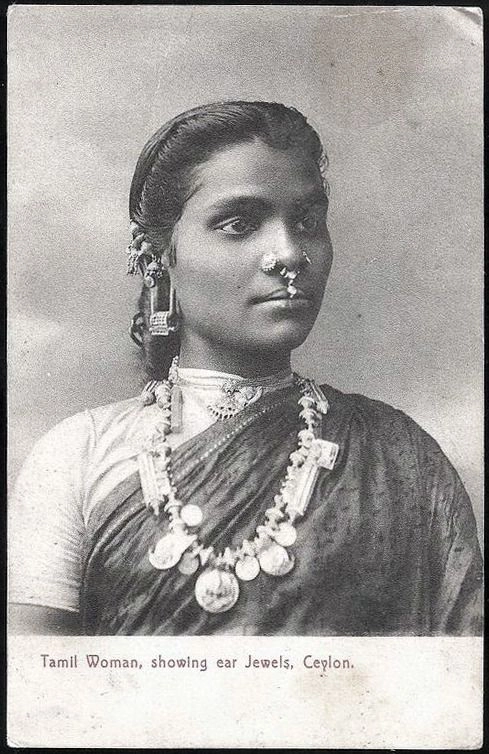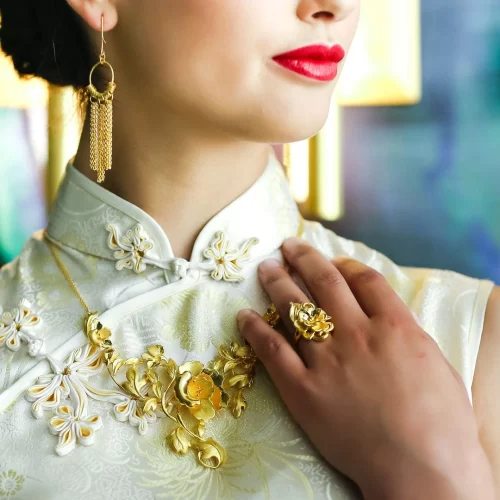A Cultural Journey through the World of Jewellery
Jewellery is a form of adornment that has been around for centuries. In addition to its decorative value, jewellery also holds great significance in various cultures around the world. Different types of jewellery, their designs, materials, and colours all have symbolic meaning and reflect the beliefs and customs of the culture they originate from. In this blog, we will explore the unique jewellery traditions of different cultures across the world.
Africa

Africa has a rich history of jewellery-making. In many African cultures, jewellery is worn to signify social status, wealth, or the attainment of specific life events, such as marriage or childbirth. The designs are often intricate and geometric, and the colours are bold and vibrant.
In West Africa, the use of gold in jewellery-making dates back to ancient times. The Ashanti people of Ghana are known for their gold jewellery designs, which often feature motifs such as the adinkra symbol, representing cultural beliefs and values. The Tuareg people of North Africa also have a long history of jewellery-making, using silver to create intricate designs with geometric patterns.
One of the most recognizable forms of African jewellery is the beaded necklaces and bracelets worn by the Maasai people of Kenya and Tanzania. The necklaces and bracelets are made from colourful glass beads and are often worn in layers. They are worn as a symbol of cultural pride and have become popular worldwide.
Asia
Asia is a vast continent with a range of cultures, each with their unique jewellery traditions. One of the oldest jewellery-making traditions comes from India, where intricate designs using gold, silver, and precious gems have been created for thousands of years. In Indian culture, jewellery is worn as a symbol of prosperity, beauty, and cultural identity.

Indian jewellery designs often feature intricate patterns and motifs, such as the peacock, lotus flower, and elephant. Kundan and Meenakari are popular techniques used in Indian jewellery-making, with the former involving setting uncut gems in gold and the latter using enamel to create colourful designs.

In China, jade has been used in jewellery-making for over 7,000 years. Jade is believed to have protective and healing properties and is often used in amulets and pendants. Chinese jewellery is often delicate and intricate, with designs featuring dragons, phoenixes, and other mythical creatures.
Middle East
The Middle East has a long history of jewellery-making, with many designs featuring intricate patterns and the use of precious metals and gems. In Islamic culture, jewellery is often worn as a symbol of faith and devotion to Allah. The designs often feature Arabic calligraphy, with verses from the Quran inscribed on the jewellery.

One of the most recognizable Middle Eastern jewellery styles is the use of the Hamsa, a hand-shaped amulet believed to protect against the evil eye. The Hamsa is a symbol of good luck and is often used in jewellery designs throughout the Middle East and North Africa.
Europe
Europe has a rich history of jewellery-making, with many styles influenced by ancient civilizations such as the Greeks and Romans. In mediaeval Europe, jewellery was often used as a symbol of wealth and status, with designs featuring intricate gold filigree and precious gems.
In more recent times, the Art Nouveau and Art Deco movements influenced European jewellery design, with more modern and abstract designs becoming popular. Today, European jewellery designers continue to create unique and innovative designs using a range of materials, from traditional gold and silver to more contemporary materials such as glass and plastic.
South America

In South America, jewellery traditions vary depending on the culture. In Peru, the ancient Inca civilization was known for its intricate gold and silver jewellery designs featuring motifs such as the sun and the condor. In Brazil, colourful and vibrant jewellery made from natural materials such as seeds and feathers are popular, and often worn during Carnival celebrations.
North America
In North America, Indigenous cultures have a rich history of jewellery-making. The designs often feature natural materials such as shells, feathers, and bone. In many Indigenous cultures, jewellery is worn as a symbol of cultural identity and spiritual connection to the natural world.
The Navajo people of the American Southwest are known for their silver jewellery designs, often featuring intricate stamping and traditional symbols such as the thunderbird and the arrow. Inuit culture in Canada and Greenland also has a long history of jewellery-making, often using materials such as ivory, bone, and animal hide to create intricate designs.
Closing Thoughts
Jewellery has played a significant role in many cultures around the world for centuries. From the bold and vibrant beaded jewellery of Africa to the intricate gold and gemstone designs of India, jewellery reflects the beliefs, values, and traditions of the cultures it originates from. Whether it is worn as a symbol of cultural identity, social status, or spiritual connection, jewellery continues to hold great significance in our world today.
